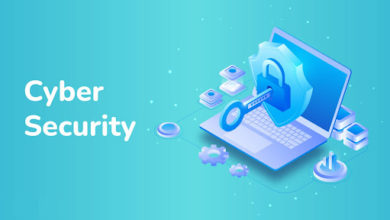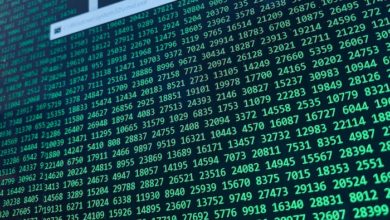Securing Your Code: A Step-by-Step Guide to Code Signing and Its Vital Functionality
KEY TAKEAWAYS
Code signing guarantees software authenticity and safety to end users. A viable way to ensure this transparency is by developers obtaining code signing certificates to showcase their products’ genuineness and affirm to their users that they’re original.
Estimates indicate that each personal computer uses about three software application packages in every county. This high number projects a high chance that people could be using counterfeit software without knowing it. Worse, software developers mostly aren’t aware that their recipients use duplicate software, sometimes with lower-quality offerings.
Thankfully, developers can ensure their users obtain legitimate software directly from their repositories through code signing. This article examines the steps that software developers can use in code signing and its functionality.

Understanding Code Signing
Code signing is an art of cryptography software developers use to prove that the Software they offer their clients is genuine. As a developer, you can use code signing software to digitally sign your drivers, executables, and software programs, which makes the process more straightforward. That makes it much easier for end users to verify the code you create to authenticate your product and foster trust.

Steps Involved In Code Signing
Code signing follows a series of steps, ensuring that every developer gets their Software signed and their end users can verify that. The entire process involves generating a private key and the attached public key that clients use to match it for verification. Below is a four-step guide to code signing you should know about.
1. Purchase a Certificate
Software developers vary in size and proportion and can be individuals or organizations. Choosing an ideal code-signing certificate provider makes the process more straightforward. That means selecting a trustworthy certificate provider with numerous resources, including instructions and troubleshooting guides.
2. Obtain Identity Verification from a Certificate Authority (CA)
A CA verifies your identity and ensures that you’re who you say you are and don’t intend to dupe the end-user or have ulterior motives. This step is paramount because some possible clones can prey on vulnerable and unaware users to scam and phish them for every Software put out on the market.
CAs ensure that nothing as such happens by adequately verifying your identity through the private key and the code signing certificate you send. CAs develop public keys that they send back to you.
3. Install the Code Signing Certificate
Once verified, you can install your code signing certificate on your Software, application, or servers. This certificate is almost as similar to secure Sockets Layer Certificates (SSL), and installing it is pretty much the same—straightforward.
4. Sign Your Executables and Scripts
Signing your scripts involves choosing a hashing algorithm, and here, you don’t mark as people conventionally do it. Instead, you develop a data string, including numbers, numerals, and figures unique to your Software or whichever platform you use.
This hashing code, known as the private key, identifies you, and end users can use an associated public key to match—or hash—it and determine your Software’s authenticity. Once your users enter the public key and it fits, it’ll affirm that the Software is original.
5. Distribute Your Software to End Users
Your end users look forward to using your software application for whichever reason or purpose you develop it for. These individuals must verify its authenticity by hashing it using the attached public key to determine your Software’s originality.
The good thing is your private key code is typically unique and will always go through whenever they hash it using the public key. The public key usually comes with every software download attached.

Importance of Code Signing
In a world where we live by code and virtually every digital device uses a plethora of Software, now’s a time as good as any to reconsider software and application authenticity. For the following reasons, code signing is more functional than ever in the modern world.
1. Authenticates Software Code
With many phishing and identity theft issues, companies, and Software developers have become increasingly concerned about their users’ safety. A code signing certificate proactively safeguards end users—who most may not be as tech-savvy to point out the nuances between original Software and their clones. Code signing helps users authenticate code and ensure that the software attached to it is safe to use.
2. Protects Individual and Company Developer’s Reputation
Most companies and individual software developers have the best intentions when developing code. However, parties with ulterior motives usually take advantage of unaware end-user cohorts and create fake Software to prey on their naivety.
The malice and damage they cause to end users, including phishing and other cybercrimes, negatively reflect on the companies that produce legitimate Software. Code signing, therefore, helps eliminate that.

3. Integration with Other Platforms
The availability of code-signing processes on numerous platforms enables swift integration. These platforms, mostly reputable—like Windows and Android—provide an added layer of trustworthiness, and users can identify legitimate software quickly.
4. Improves Revenue Flows
The software development industry, encompassing cloud-based Software as a Service (SaaS) to license and maintain, faces an upward trend in growth. With its market projected to reach over $650 billion in 2023, companies must capitalize on this growth by raking in more trustworthy users. More authentic Software has and will benefit if they implement code signing.
Bottom Line
Code signing has become more essential than ever in the modern-day world. With so many counterfeit software products in the market, safeguarding end users should be every software developer’s aim. Code signing also goes far beyond by improving revenue flows for companies and individual developers and protecting their reputations. Code signing should be more or less of a routine and mandatory process to ensure a much safer realm in the consumption of software products.





